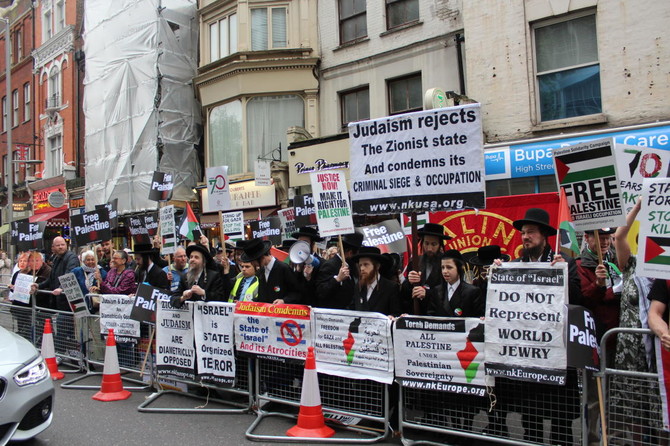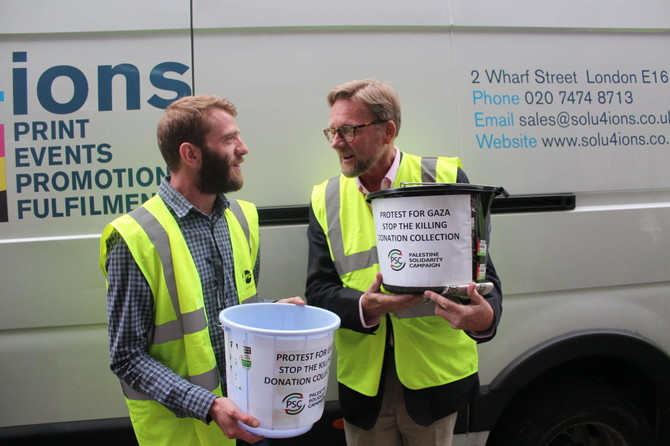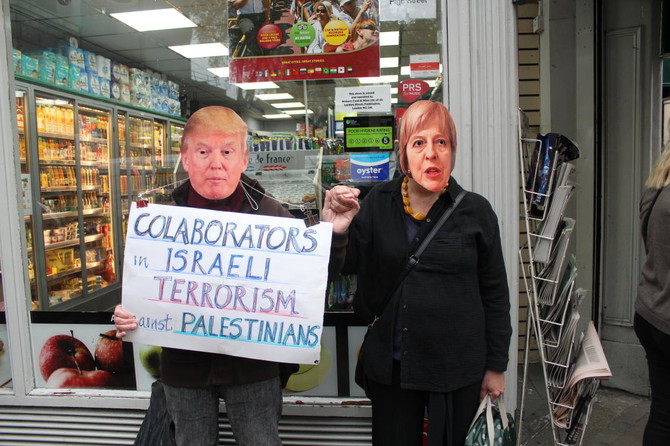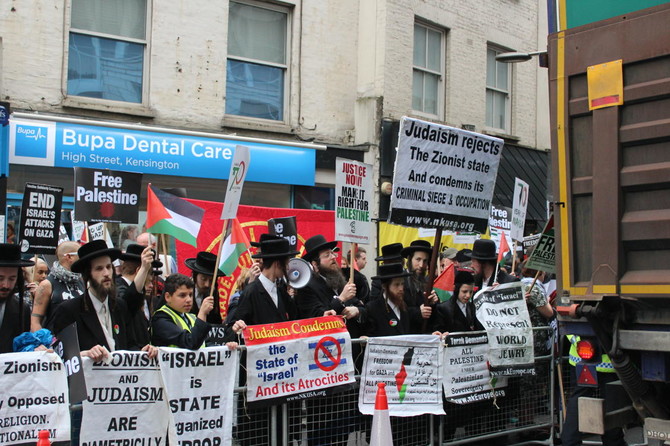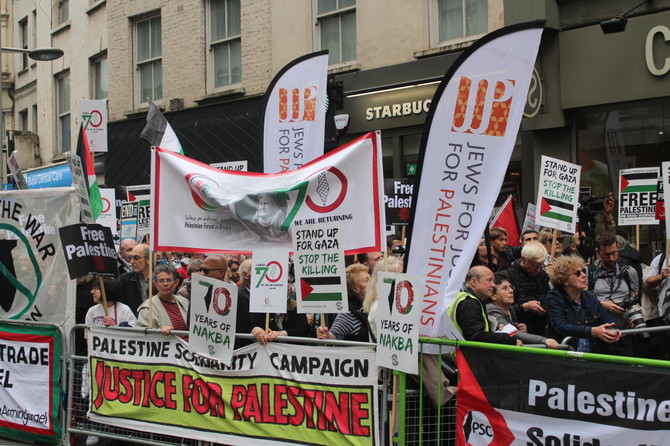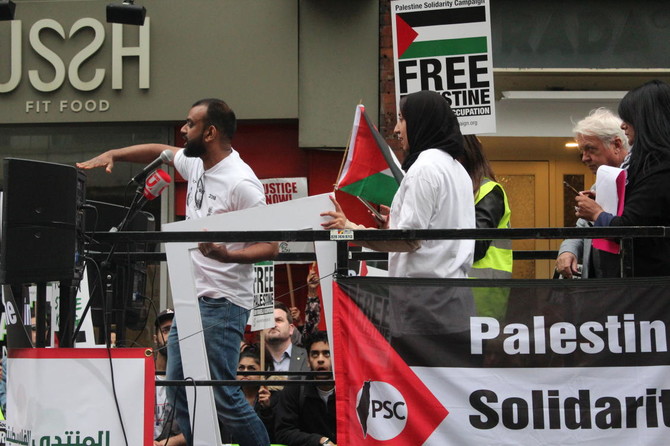LONDON: Hundreds of protesters gathered in London on Friday and all over the United Kingdom to express solidarity with Palestine as they mark 70 years of “Nakba.”
“Nakba is a process of ethnic cleansing that took place between 1947 and 1949 where 750,000 Palestinians were expelled and over 500 Palestinian villages and towns wiped off the face of the Earth,” explained Ben Jamal, Chairman of Palestinian Solidarity Campaign (PSC).
This year, the annual demonstration was entitled “Stand up for Gaza – Stop the Killing” and it was held on Friday opposite the Israeli embassy to coincide with the “Great March of Return,” calling for justice, equality and the implementation of the right of return.
Referring to the tragedy in Gaza, Jamal described it as a continuing nakba, saying: “Our message to Israel today is the Palestinian people will not give up their existence and until they enjoy freedom, justice and equality for their homeland we will not stop acting in solidarity with them and campaigning here in the UK until they achieve those goals.”
Palestinian Ambassador to the UK, Manuel Hassassian, also shared similar thoughts saying the Nakba is “not something in the past, the Nakba is the present and the future. As long as Israel occupies our territories the Nakba will continue.”
The “Great March of Return” entered its sixth week in Gaza on Friday as demonstrations reach their climax.
Israeli army fire killed 45 Palestinian protesters and wounded more than 2,000 since the weekly protests led by Gaza’s ruling group Hamas began in late March. Save the Children said more than 250 children had been shot with live ammunition by the Israeli army during the six previous Friday demonstrations.
“It is time for the international community, big powers, the EU, to do something to stop the carnage that Israel is inflicting upon innocent Palestinians. We want peace, we want to end this violence and have our independent state and live side by side democratically with Israel and our Arab neighbors,” said Ambassador Hassassian.
This year’s commemoration also coincides with US President Donald Trump’s controversial decision to recognize Jerusalem as Israel’s capital and relocate the US embassy, which is due to be inaugurated on Monday.
Ziad Elaloul, Spokesperson for the Popular Conference for Palestinians Abroad said Trump’s decision to move the embassy from Tel Aviv to Jerusalem on the 14th of May is meant to challenge the international community which already rejected the decision.
He also said “this is a message to Palestinians and Arab as well that he is punishing us and he doesn’t care about our suffering,” adding that they have identified over 140 events throughout the world over the next 3 days that are memorializing the day of Nakba and refusal over Trump’s decision.
Shamiul Joarder, Head of Public Affairs at Friends of Al Aqsa (FOA) noted the important significance of this day, which is something that is traditionally marked in the UK and throughout the world in solidarity with the Palestinians. He added: “As the years go on and the occupation entrenches itself we are here to stand shoulder to shoulder with the Palestinians until Palestine is free.”
Nakba, meaning “catastrophe” or “disaster,” is marked on May 15 and refers to the 1948 Palestinian exodus, which occurred when more than 700,000 Palestinian Arabs were expelled or displaced from their homes and 78 percent of the land was taken over, during the 1948 Palestine war.
The demo was organized by PSC, in cooperation with Friends of Al-Aqsa and Palestinian Forum in Britain and with the support of the Muslim Association of Britain, Campaign for Nuclear Disarmament, Stop the War Coalition, EuroPal Forum.
Less than a dozen protestesters held a counter Israeli demonstration on the opposite side of the street.


